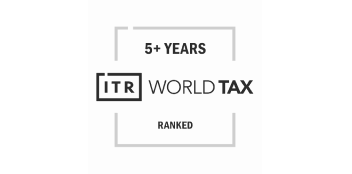


On July 16, 2025, President Claudia Sheinbaum published in the Official Gazette of the Federation the new Telecommunications and Broadcasting Law (“LMTR, per its acronyms in Spanish”), which repeals the Federal Telecommunications and Broadcasting Law in force since 2014. This reform represents a structural shift in the regulation of the sector, by establishing a new regulatory body and assigning new responsibilities to the recently created Digital Transformation and Telecommunications Agency (“Agency”). Broadly speaking, the reform aims to reorganize the sector’s institutional framework, strengthen the State's governance through the Federal Executive Branch, and simplify the concessions regime.
Additionally, the reform involves a reconfiguration of the functions previously performed by the Federal Telecommunications Institute (“IFT” per its acronyms in Spanish), which will be replaced by the Telecommunications Regulatory Commission (“CRT” per its acronyms in Spanish). This change also alters the balance between technical and political powers in the regulation of the sector, which could have significant implications for industry participants.
The main aspects of the new law are summarized below:
The IFT is replaced by the CRT as the primary authority in the sector. The CRT is defined as a decentralized administrative body under the Agency, with technical, operational, and managerial interdependence. Its main objective is to ensure the efficient development of telecommunications and broadcasting. Unlike the IFT, the CRT will no longer be a constitutionally autonomous body and will now fall under the Federal Executive, which will have the power to issue general administrative laws for the regulation, promotion, and oversight of the efficient development of telecommunications and broadcasting.
The CRT will be composed of a Governing Board, which is the highest decision-making body, made up of five commissioners, including its president, all of whom will have voice and vote. Commissioners will be appointed in a staggered manner by the President of the Republic and must be ratified by the Senate within thirty calendar days of the submission of the nomination.
The CRT's primary functions are to regulate and supervise the telecommunications and broadcasting sectors in Mexico. Key responsibilities include issuing technical and administrative provisions, proposing national positions on telecommunications and space-related activities, and establishing guidelines for sector infrastructure. It also grants, modifies, or revokes licenses and authorizations, conducts spectrum auctions, sets compensation fees, and defines interconnection and interoperability conditions, thereby ensuring the efficient and orderly development of telecommunications and broadcasting in the country.
The Agency will be responsible for formulating and leading the federal government’s telecommunications, satellite, and broadcasting policies. It must also ensure continuity of services in the event of license revocation or reversion and is tasked with planning and implementing universal and social coverage programs. The Agency must coordinate with the TRC to promote access to information technologies and telecommunications services, including broadband and Internet, both within federal institutions and in collaboration with state and municipal entities. It also develops programs to expand broadband access in public locations and promotes the availability of satellite services for national security networks and other governmental purposes.
The requirement to apply for a single concession to provide all types of public telecommunications and broadcasting services remains in place. This concession may be granted for commercial, public, private, or social use. The duration of these concessions will be up to 30 years and may be renewed.
Regarding radio spectrum and orbital resource concessions, these will be granted by the CRT for the use, utilization, and exploitation of designated radio frequency bands and for the occupation and exploitation of orbital resources. These concessions can also be for commercial, public, private, or social use. Their term will be up to 20 years, also renewable.
The authorization regime remains in place; however, new scenarios have been added that will require prior authorization from the CRT. Such authorization must be obtained to use spectrum bands for experimentation, technical and economic feasibility testing, or secondary use in specific events or in facilities designated for commercial or industrial activities.
In general, all powers previously held by the IFT regarding economic competition under the prior law will be transferred to the National Antitrust Commission (“CAN”, per its acronyms in Spanish). However, the CNA must request a technical opinion from the CRT to support any dominance declarations.
The CRT will remain the authority to impose measures on dominant economic agents to ensure the efficient development of the telecommunications and broadcasting sectors, these include: (i) requiring public consultations on public offers for interconnection services, passive infrastructure sharing, access and links, and wholesale resale services, (ii) Approving tariffs for public services, intermediate services to other concessionaires, and operations, in a disaggregated and individual manner to prevent cross-subsidies, (iii) issuing technical opinions on additional measures to ensure competition in the telecommunications and broadcasting markets.
In the case of dominant agents in the telecommunications sector, they are still required to submit to both the CRT and the CNA the registry of authorized interconnection services granted by the CRT to other concessionaires, as well as separate accounting for such services.
The CRT will also be responsible for imposing pro-competition measures in the television, radio, telephony, and data services sectors, although the LMTR does not provide detailed guidance on the specific measures it may use for this purpose.
Concessionaires offering broadcasting, television, or restricted audio services must ensure an appropriate balance between advertising and daily programming. They are also required to provide mechanisms that clearly distinguish between news content and opinion, particularly in relation to the right of reply. The CRT will implement a registry of programmers and signal operators to handle relevant notifications. To prevent deceptive advertising, it is prohibited to broadcast advertisements or propaganda disguised as news or journalistic content.
Additionally, concessionaires providing broadcasting, television, or restricted audio services in Mexico are prohibited from broadcasting political, ideological, commercial, or other propaganda from foreign governments, with the exception of tourism, cultural, or sports promotions. Foreign governments may not use national media to influence Mexico’s internal affairs.
The Ministry of the Interior is authorized to order the suspension of advertising transmission, as a precautionary measure and upon prior notice to the concessionaires.
Regarding audience rights, these are reinforced, including defense mechanisms, codes of conduct to be issued by concessionaires, and audience advocacy. The Codes of conduct must comply with the guidelines issued by the CRT.
The LMTR also provides that audiences with disabilities may have certain rights, including: (i) the availability of subtitling, dubbing into Spanish, and Mexican sign language services in the most-watched news and children’s programs, to facilitate accessibility for people with hearing impairments; (ii) the promotion of respectful and inclusive visual representations that recognize the abilities and merits of people with disabilities; (iii) the existence of accessible mechanisms to submit complaints, suggestions, and claims to audience advocates, provided they do not impose a disproportionate burden on concessionaires; and (iv) access to programming guides in accessible formats
Concessionaires and authorized parties must cooperate with security and justice authorities when formally requested, including providing real-time geolocation data of terminal equipment and retaining records of communications. There must be records and controls of communications made from any type of terminal device or line using either proprietary or leased numbering, under any modality, to ensure full subscriber identification.
Timelines and mechanisms are established for delivering information to competent authorities.
The list of parties subject to sanctions under the LMTR is expanded to include individual offenders directly involved in violations, regardless of whether they are concessionaires or authorized service providers.
The authority to impose sanctions depends on the type of infraction:
(i) The CRT will sanction violations by concessionaires, authorized parties, registrants, passive infrastructure providers, and individuals.
(ii) The Federal Consumer Protection Agency will sanction violations of end-user and disability rights, whether committed by concessionaires or individuals.
(iii) The Ministry of the Interior will sanction foreign violations and noncompliance in advertising and propaganda.
On the other hand, for the legal remedies, the regime previously established by the now-repealed Federal Telecommunications and Broadcasting Law is replicated. It states that general regulations, acts, or omissions of the Commission, including Mexican Official Standards related to telecommunications and broadcasting, may only be challenged through an indirect amparo proceeding and will not be subject to suspension.
In this regard, specialized courts of the Federal Judiciary Branch in matters of competition, telecommunications, and broadcasting will have jurisdiction over disputes arising from the application of the LMTR.
The reform stipulates the dissolution of the IFT and the creation of the CRT, transferring all functions, rights, obligations, and resources (material, financial, and human) from the former to the latter. The transition process begins the day after the CRT’s Governing Board is formally constituted. At that moment, the Federal Telecommunications and Broadcasting Law is repealed, along with any provisions conflicting with the new framework. Until the TRC is fully operational, the IFT will continue functioning to ensure regulatory and operational continuity in the sector.
Ongoing procedures and filings will be assumed by the CRT or, where applicable, the CNA, in accordance with the law in force at the time they were initiated. A general 15-business-day suspension of procedures will occur following the installation of the TRC's Governing Board, except in cases involving obligations of concessionaires, authorized parties, license holders, and economic agents, or critical deadlines such as those related to the use and exploitation of frequency bands.
Legal acts, contracts, and agreements executed by the IFT will remain valid and binding on the CRT, unless the parties agree to ratify, modify, or terminate them early. Permits or licenses granted prior to the 2014 Federal Telecommunications and Broadcasting Law, allowing for the use of radio spectrum bands and still in effect when the new Decree enters into force, must transition to the appropriate concession, authorization, or registration regime within one year. Failure to do so will result in automatic expiration and reversion of the frequencies to the Nation. Social, community, indigenous, and Afro-Mexican use concessionaires holding titles prior to the new Decree will be subject only to the new obligations established, without prejudice to other applicable provisions.
For any questions or comments, you can contact our expert team:
Antitrust
Infrastructure
Awards














